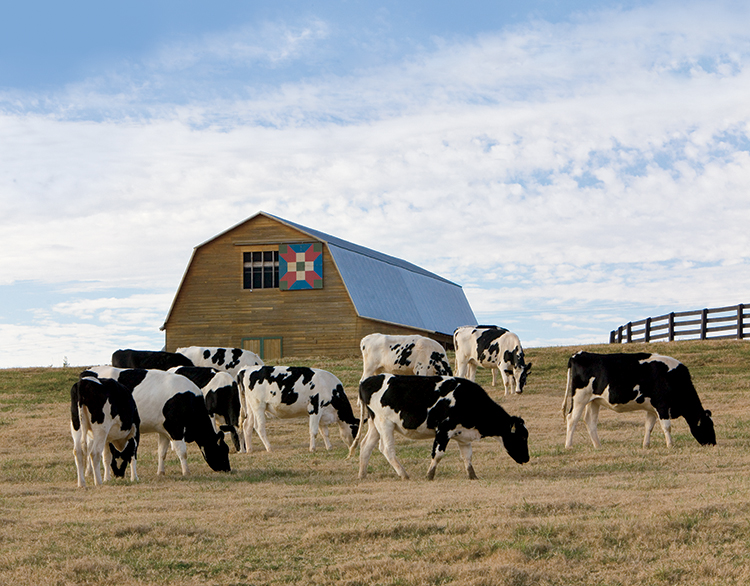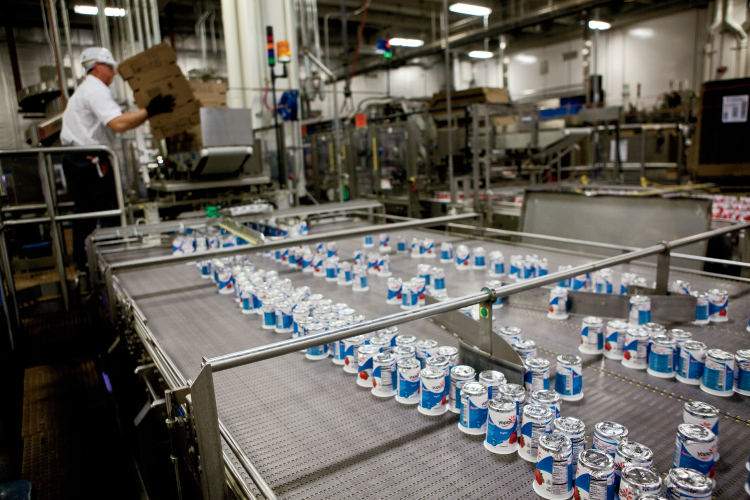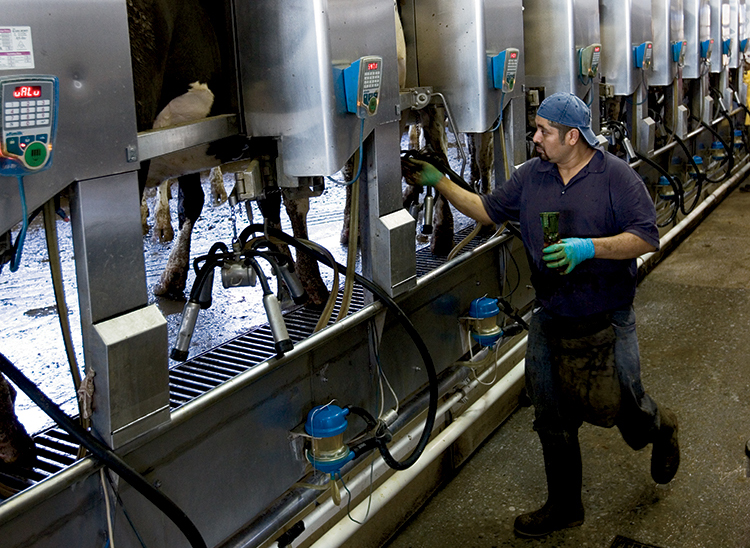Home > Tennessee > Tennessee Crops & Livestock > Tennessee Dairy is Helping the Herd
Tennessee Dairy is Helping the Herd
In partnership with: Tennessee Department of Agriculture

It’s not uncommon to see a Tennessean enjoying a frosty Klondike bar on a hot summer day, or savoring their favorite flavor of Yoplait yogurt. But most of them probably don’t know that these tasty dairy delights are manufactured right here in the Volunteer State.
Thanks to the additions of both a Yoplait and Unilever (manufacturers of Klondike, Breyer’s and more) plant in the past decade, Tennessee’s dairy industry is poised to grow.
“Like most of the Southeast, Tennessee has experienced a decrease in dairy farms due to a number of things,” says Ed Harlan, assistant commissioner for market development at the Tennessee Department of Agriculture. “These factors include residential growth and farmers who are getting older, whose families aren’t carrying on the tradition.”

However, Harlan says that there are some new dairies coming in from out of state, as well as a few younger dairies starting up. TDA is doing all it can to stabilize and grow the industry, making the state more attractive to dairy farmers. Harlan, a former dairy farmer himself, says the demand from end users on the dairy products produced by large companies such as Yoplait and Unilever will have a tremendous influence on dairy production within the state.
“The demand is here,” says Larry Gibson, plant manager at the Unilever plant in Covington. “The state is aligned for improvement, it’s just going to be a long-term strategy.”
Currently, the plant uses some Tennessee dairy products to make their ice cream, but also sources from out of state. Gibson says they’re always interested in sourcing more local products.

Reversing Dairy Decline
According to the University of Tennessee Extension, in 1995 there were more than 1,300 dairy farms in Tennessee. Currently, there are only 377 licensed dairies operating in 65 counties, mostly the middle and eastern parts of the state.
So why the decline in dairy? Dr. Steve Oliver, assistant dean of UT AgResearch and a professor of animal science says that the decline in production and milk quality in the Southeast is due to high levels of mastitis, an inflammation of the cows’ udders. Along with efforts from the TDA, the University of Tennessee Institute of Agriculture is also working to improve the state’s industry, leading an initiative with five other state institutions to help revive the industries in Tennessee and the rest of the Southeast.

Oliver is leading the USDA funded project, called the Southeast Quality Milk Initiative, which addresses the long-standing issue of milk quality and what can be done about it. Along with UT, the initiative includes the University of Kentucky, Virginia Tech, University of Florida, Mississippi State University and the University of Georgia.
It focuses on four primary objectives, including why dairy farmers use (or don’t use) certain practices that affect milk quality, assessing where the Southeast stands in terms of milk quality, helping dairy farmers make informed management decisions and developing the next generation of support.

“We view improved milk quality as something that has beneficial impacts throughout the entire farm-to-table chain,” says Dr. Peter Krawczel, dairy behavior and welfare specialist, and assistant professor of animal science at UT. “For cows, helping milk quality will decrease disease, decrease mortality and increase productivity. For the farm, it will increase the efficiency of the operation, which will also lower costs of production, bringing increased revenue back to the farm. A lower somatic cell count (which is an indicator of the quality of milk) improves shelf life of fluid milk and improves taste, which can help drive consumer demand.”
Ultimately, for Tennessee’s dairy industry to grow, Krawczel says a mixture of things need to happen: “Farmers who are already here need to be able to operate in a profitable manner, the next generation needs to be able to take over operations as current generations retire and Tennessee needs to be an attractive place for new farmers to establish new dairies to replace ones that we have lost.”




